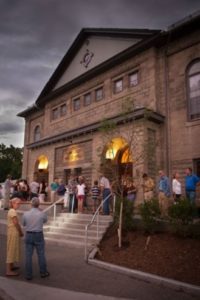
Cultural heritage, arts organizations, and artists hold the collective history of our communities and shape our identity through creative expression. Their assets, both tangible and intangible, are often irreplaceable and worthy of protection. Cultural institutions can be critical to recovery, serving as gathering places, information centers, educational resources, and icons of community identity. If you are involved in emergency management, consider reaching out to local artists and arts and culture organizations before a disaster to ensure that they are as prepared as possible for the most likely scenarios. VACDaRN will be encouraging them to be proactive and reach out to you as well, and we want to be your primary resource when it comes to engaging with these constituents.
Other resources for emergency managers, both general and specific to arts and cultural heritage:
Vermont Emergency Management Association : a grass root effort to provide a voice for Vermont’s public, private, and non-profit emergency management professionals
Vermont Regional Planning Commissions: every municipality belongs to one of the 11 RPCs, which support and coordinate emergency preparedness and mitigation efforts.
Heritage Emergency National Task Force: co-sponsored by the Federal Emergency Management Agency (FEMA) and the Smithsonian Institution, is a partnership of 42 national service organizations and federal agencies, with the mission of protecting cultural heritage in our nation’s states, tribes, territories, and local communities from the damaging effects of natural disasters and other emergencies.
The National Heritage Responders (NHR) respond to the needs of cultural institutions during emergencies and disasters through coordinated efforts with first responders, state agencies, vendors, and the public. Two NHR members live in Vermont.
FEMA offers training resources on the Incident Command System employed during emergency response and helps facilitate the Community Emergency Response Team (CERT) program, which offers its own training resources for local volunteers.
The Mesothelioma Center’s educational guide about natural disasters and asbestos.
The USDA’s Disaster Resiliency and Recovery Resources: A Guide for Rural Communities.